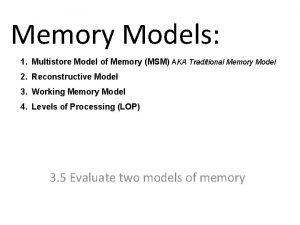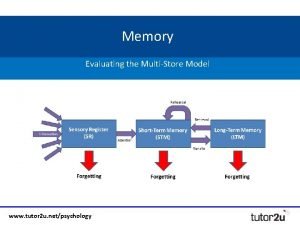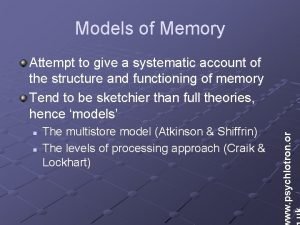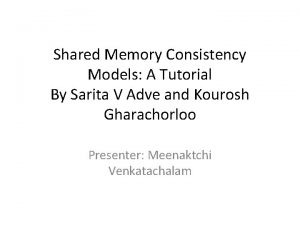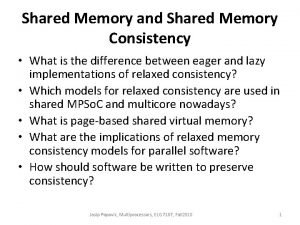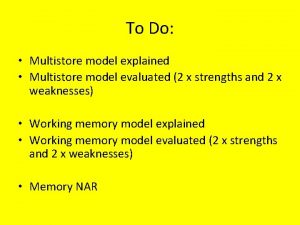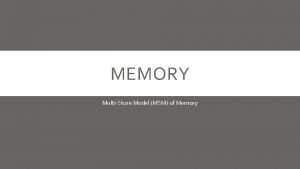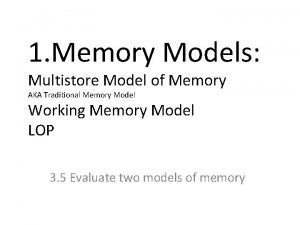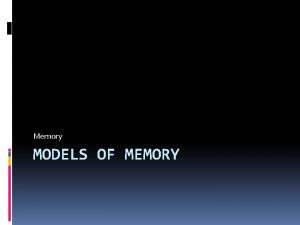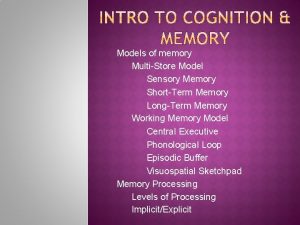Models of Memory n n The multistore model







- Slides: 7

Models of Memory n n The multistore model (Atkinson & Shiffrin) The levels of processing approach (Craik & Lockhart) ww. psychlotron. or Attempt to give a systematic account of the structure and functioning of memory Tend to be sketchier than full theories, hence ‘models’

Multistore Model STM A limited amount of info is held for a short time in STM The rehearsal loop allows info to be maintained in STM for longer periods LTM ww. psychlotron. or Information is registered through the sensory & attentional systems Rehearsal allows info to be moved to LTM for long term storage

Multistore Model The model contains a number of testable propositions: n n Memory consists of two separate stores Information is transferred from STM to LTM by rehearsal STM and LTM are unitary stores that cannot be subdivided ww. psychlotron. or n

Glanzer & Cunitz’ (1966) serial position experiments show that STM is affected by interference tasks but LTM is not Milner (1966) and other cases studies of brain injury patients suggest that it is possible to damage STM but leave LTM intact (and vice versa) ww. psychlotron. or Two Separate Stores

Rehearsal and Info Transfer Hyde and Jenkins (1973) demonstrated incidental learning n PPs were able to recall info later even though they had made no conscious effort to learn the material The amount recalled depended on how the PPs had processed info, not how long they rehearsed it for ww. psychlotron. or n

Baddeley (1973) showed that PPs can combine several STM tasks successfully provided they use different sensory modalities – suggests several different stores Tulving (1972) suggests that LTM can be divided into episodic, semantic and procedural components, which may be stored separately ww. psychlotron. or Unitary Stores

Influential early model that stimulated lots of further research Best support for idea that STM & LTM are separate stores In other respects an oversimplification of memory processes ww. psychlotron. or Evaluation of Multistore
